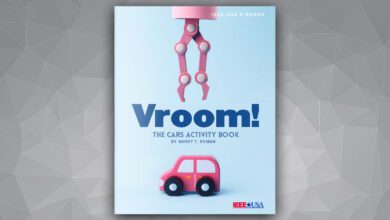
In 2017, we will mark the 60th anniversary of the launch of the world’s first satellite. On 4 October 1957, the former Soviet Union launched Sputnik into a low earth elliptical orbit. This event initiated a renewed emphasis on science and technology in American schools and ushered in an era of massive technological and scientific development. Congress enacted the 1958 National Defense Education Act, which provided low-interest loans for college tuition to students majoring in math and science. Innovations resulted in humans landing on the moon, satellite-based global positioning systems, robotic space probes, innovative medical technologies, the international space station and deep space telescopes such as the Hubble, to name but a few.
Today, new discoveries, innovative technology and a new generation of visionary scientists and private sector entrepreneurs are rekindling excitement in space exploration. The cover story, included as the Technology Quarterly inset in the August 2016 issue of The Economist focuses on “Pioneers, Planets and the Next Space Age: Remaking the Sky” [Volume 420, Number 9004, www.economist.com] and discusses the topic in detail.
This year, science fiction fans celebrated a half-century since the crew of the Starship Enterprise set out on a five-year voyage into the unknown, which grew into a continuing and very sustainable franchise. Star Trek featured futuristic technology, such as handheld wireless communication devices, portable tablet computers, information stored on solid chips, holograms, video conferencing, touch-screen and voice-control interfaces, 3-D printers allowing for on-demand fabrication of many objects, beam weapons, universal translators, and intergalactic understandings. The imagination of science fiction writers, such as the late Gene Roddenberry, creator of Star Trek, who had the vision to imagine a future where technology and science fiction point out directions in which we could go; and when, combined with basic and applied science, provides humanity with the tools to achieve greatness. Many of these science fiction predictions are now reality and all have radically changed our world, making life better for most all of humanity.
Why is space exploration important? Not only is it an important stimulus to innovation; our very survival could depend on it. On 8 September 2016, NASA’s first asteroid sampling mission was launched into space from Cape Canaveral Air Force Station in Florida, beginning a journey that will revolutionize our understanding of the solar system [www.asteroidmission.org].This space probe will rendezvous with a dark, potentially dangerous asteroid called Bennu in August of 2018; spend two years scanning the asteroid, creating a map; briefly land on it, using a robotic arm to obtain a sample of it; and returning the sample back to earth arriving in 2023. Bennu is considered to be one of the most dangerous space asteroids we know of because it could one day collide with Earth. Even though the odds are small — about 1 in 2,500 — scientists predict that this asteroid could impact Earth sometime between 2175 and 2199. It is important to be proactive and get as much warning as possible for this threat and others to be able to launch an effective space mission to deflect an asteroid, avoiding a catastrophic event.
Other Bytes
- David Dobbs provides insights into medical advances and treatments that are benefiting many who are losing or have lost their eyesight in “A Cure in Sight” [National Geographic, 230(3):30-53, September 2016, www.nationalgeographic.com/magazine]. It is estimated that one in every 200 people worldwide cannot see and another 246 million have reduced vision. For myself I have experienced this personally; having undergone bilateral cataract lens replacement treatment a few months ago. It was not that long ago when people with cataracts routinely went blind. Today, replacement of the cloudy natural lens with a clear artificial lens is a ten minute surgery; with an immediate return to clear vision. This article provides important information on diseases that affect the eye, current treatment, and research being done. The author also discusses the gulf between the developed and developing world in vision care.
- MIT Technology Review profiles “50 Smartest Companies” [119(4):61-93, July/August 2016, www.technologyreview.com]. These companies are considered “smart” because of the way they create new opportunities; combining innovative technology with an effective business model. In particular they are smart in how they are taking advantage of new digital technologies.
- “9 Key Questions about our Future” is the focus of the cover story in the September 2016 issue of Scientific American[315(3):28-85, www.scientificamerican.com]. Nine authoritative articles discuss how our species is transforming the world and what these changes mean for our future. Focus areas include geology, environment, population, economics, biotechnology, health, robotics space and an essay on “The Great Unknown”.
- Leigh Buchanan describes in the September 2016 issue of Inc. [www.inc.com] how the founders of “500 of America’s Fastest-Growing Private Companies” have not merely survived, but how they have excelled on their journey to success. Leading the ranking is Loot Crate with a three-year growth rate of 66,788% followed by Paint Nite and CalCom Solar. Many of the companies are profiled, providing valuable insights into how they achieved success.
- Today, many businesses are taking on society’s biggest problems and achieving financial success. Erika Fry and others in the FORTUNE article “50 Companies Changing the World: and Making Money Doing it” [174(3):58-78, September 2016, www.fortune.com] profiles fifty companies that do well by doing good globally.
- Linda Marsa describes in her article “Science of Aging” [Discover. 37(8):28-35, October 2016, www.discovermagazine.com] how the secrets to staying young may lie in the DNA of the oldest among us. New discoveries are emerging revealing why some individuals maintain physical and mental wellness well into their ninth and tenth decade. They seem to have better genetic protective mechanisms against illness.
- High-energy facilities around the world are assisting researchers in their quest to reveal the inner secrets of materials. Mitch Jacoby describes how powerful light sources are able to probe a wide range of materials and reveal their secrets in “Synchrotron Science” [Chemical and Engineering News, 94(32):28-33, August 2016, www.cen.acs.org].
- Douglas Guth describes how living laboratories provide students with real-world skills while helping institutions meet sustainability goals in “The Living Lab: Merging Environmental Health and Education” [Community College Journal, 87(1):12-17, August/September 2016, www.ccjournal-digital.com] A case study is presented of the Raritan Valley Community Colleges initiative on this important topic. In particular the article describes the benefits both to the student and to the institution of applying environmental stewardship to their place of learning.
- Valuable tips on how to become the “Ultimate Leader” are provided in “25 Skills Every Leader Needs Now” [Canadian Business, 89(9):23-35, August 2016, www.canadianbusiness.com]. Based upon authoritative interviews the strategies described are important lessons not taught in the classroom that will facilitate your personal and career success. A selection of these include: making the tough calls, rallying the troops, cultivating creativity, cultivating a successor, mastering the power lunch and staying cool under pressure.
Terrance Malkinson is a communications specialist, business analyst and futurist. He is an IEEE Senior Life Member and a member of the American College of Sports Medicine and the World Future Society. He is currently an international correspondent for IEEE-USA InSight, an associate editor for IEEE Canadian Review, and a member of the editorial advisory board of the IEEE Institute. Additionally, he leads a number of applied research projects. The author is grateful to the staff and resources of the Reg Erhardt library at SAIT Polytechnic and the Haskayne Business Library of the University of Calgary. He can be reached at malkinst@telus.net.






